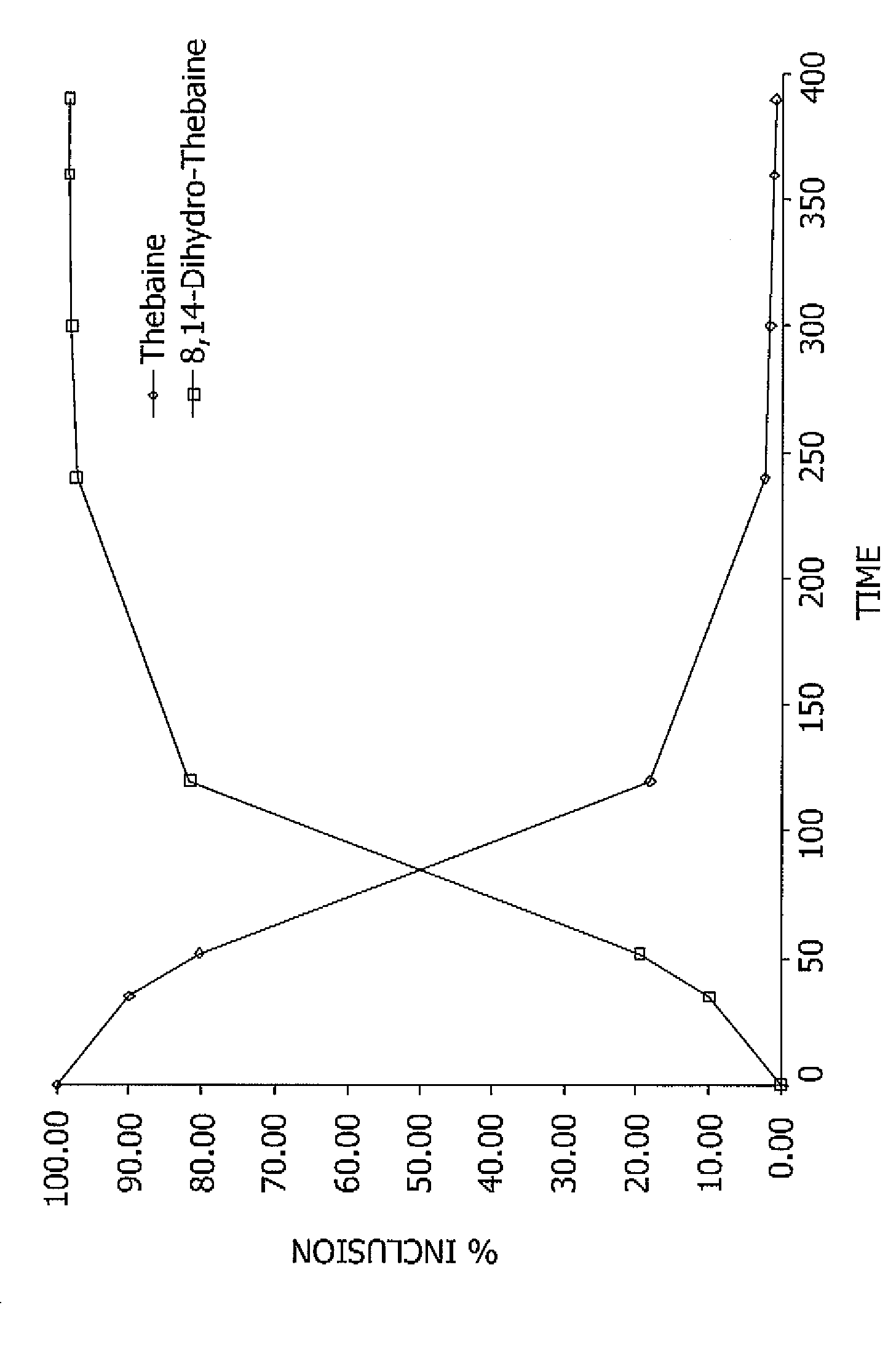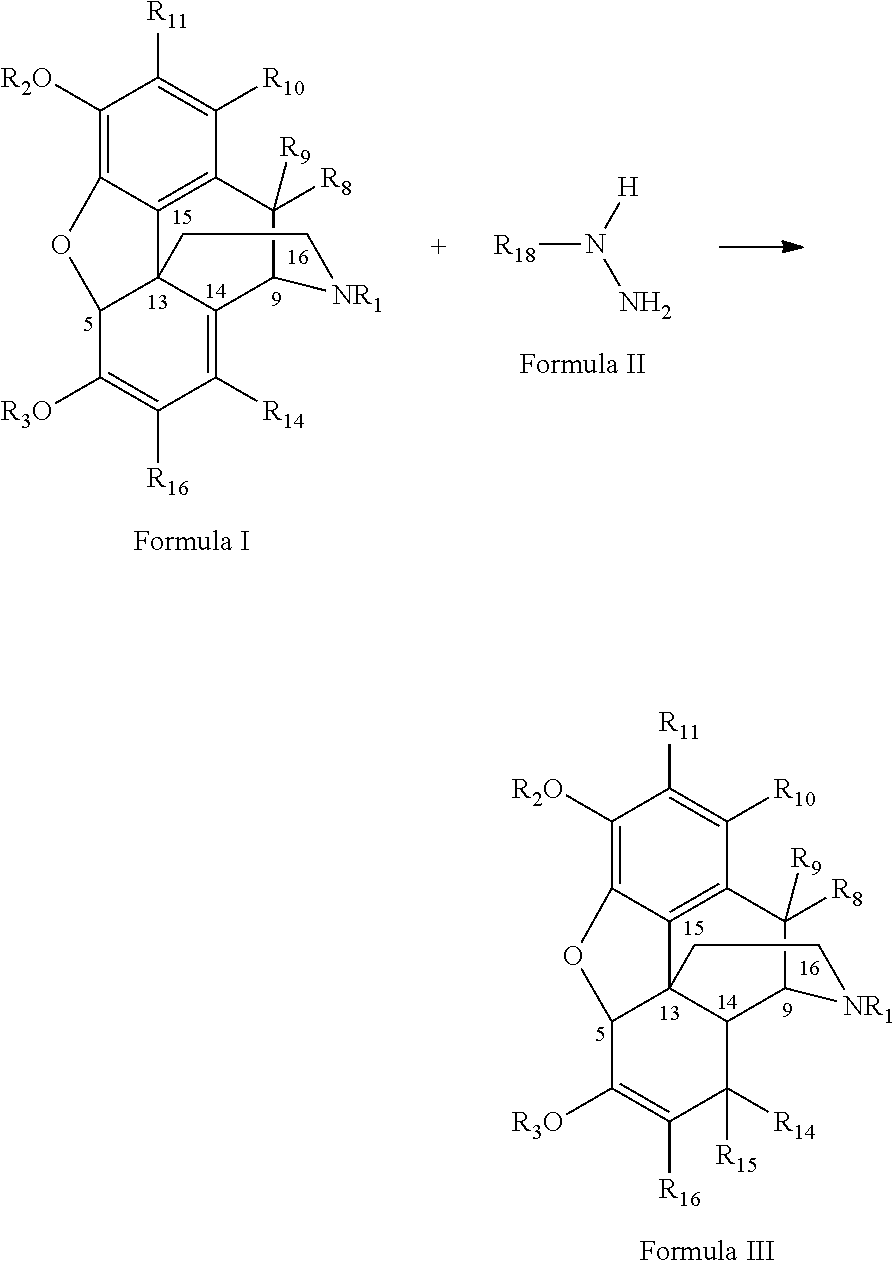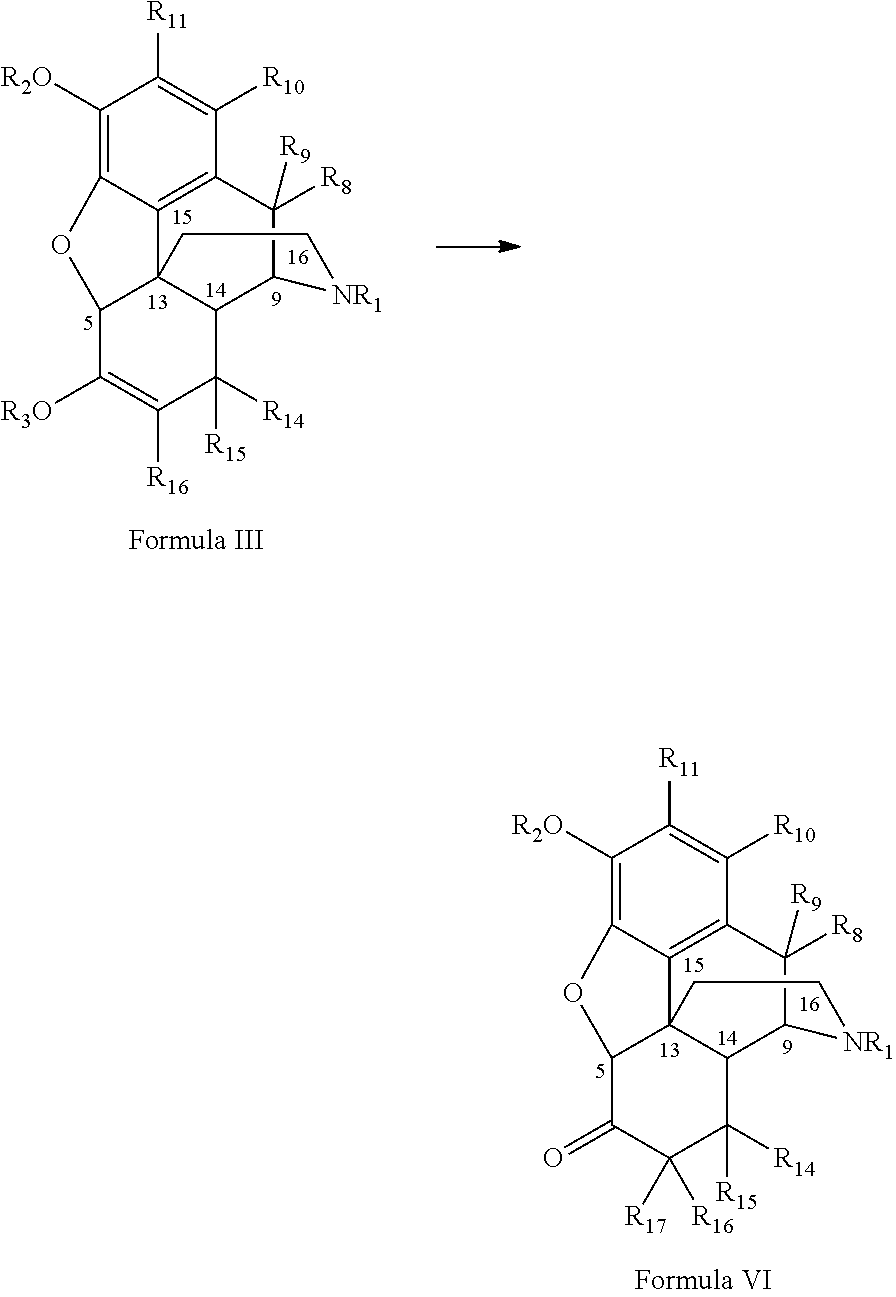Methods for producing hydrocodone, hydromorphone or a derivative thereof
a hydromorphone and hydrocodone technology, applied in the field of methods for producing opioid derivatives, can solve the problems of poor yield, difficult preparation of catalysts, and high cost of methods and inefficientness
- Summary
- Abstract
- Description
- Claims
- Application Information
AI Technical Summary
Problems solved by technology
Method used
Image
Examples
example 1
Reaction Kinetics of the Hydrogenation of Thebaine to 8,14-dihydro-thebaine
[0085]In this Example, 8,14-dihydro-thebaine was produced by contacting thebaine with p-toluene sulfonyl hydrazide at 80-85° C. using 2-methoxy-ethanol and ethanol-amine, with overhead stirring and a nitrogen purge. The percent conversion of thebaine to 8,14-dihydro-thebaine in the reaction mixture was measured as the reaction proceeded for 390 minutes. The measurements are reported in the graph of FIG. 1.
[0086]A portion of the material was worked up using standard extraction and precipitation techniques, and then analyzed by Ultra High Pressure liquid chromatography. Another portion of the material, after cooling and filtering, was similarly analyzed. The solvent-stripped product was 97.5 wt % pure and the filtered product was 95 wt % pure. The 8,14-dihydro-thebaine product was white in color.
example 2
Investigation of the Effect of Varying Temperature in the Hydrolysis of 8,14-dihydro-thebaine to Hydrocodone
[0087]In this Example, 8,14-dihydro-thebaine was converted to hydrocodone by contacting the 8,14-dihydro-thebaine with concentrated hydrochloric acid at a number of temperatures and reaction times, as detailed in Table C below. The wt % of hydrocodone and the number of impurities in the reaction mixture are also shown in Table C.
[0088]
TABLE CTemperature Dependence in the Conversion of 8,14-dihydro-thebaine to hydrocodone.Number ofTotal ElapsedTemp (° C.)% HydrocodoneImpuritiesTime (min)21.394.37910040.492.931012550.393.801114555.093.431317065.093.121419075.492.511720581.590.441722579.684.292927081.380.6830315
In this Example, it was observed that the reaction rate was proportional to the hydrogen ion concentration and equivalency in the reaction mixture. The table shows higher temperatures gave more decomposition products and should be avoided. The Table also shows there is no ...
example 3
Production of 8,14-dihydro-thebaine by Hydrogenation of Thebaine and Subsequent Purification
[0089]Thebaine (142.86 g of 70 wt % material containing 30 wt % water, 100.00 g, 0.321 mol), p-toluene sulfonyl hydrazide (131.58 g, 0.706 mop and ethanol (400 ml) were stirred and heated to 70° C. Ethanol amine (43.16 g, 0.706 mol) was added to this solution over a 1 h period. The reaction was heated for a further 10 h at this temperature and then allowed to cool to room temperature. The reaction was diluted with water (400 ml) and the pH adjusted to >9.30 with concentrated (28.0-30.0%) ammonium hydroxide (30 ml) and cooled to <5° C. The product was isolated by filtration and washed with 1% v / v ammonium hydroxide in water (400 ml) to give 8,14-dihydro-thebaine as a white amorphous solid (91.94 g, 91.3% yield, 99.29 wt % by assay, with 0.16 wt % of the 6-β-parzone methyl ether impurity).
PUM
| Property | Measurement | Unit |
|---|---|---|
| temperature | aaaaa | aaaaa |
| reaction time | aaaaa | aaaaa |
| temperature | aaaaa | aaaaa |
Abstract
Description
Claims
Application Information
 Login to View More
Login to View More - R&D
- Intellectual Property
- Life Sciences
- Materials
- Tech Scout
- Unparalleled Data Quality
- Higher Quality Content
- 60% Fewer Hallucinations
Browse by: Latest US Patents, China's latest patents, Technical Efficacy Thesaurus, Application Domain, Technology Topic, Popular Technical Reports.
© 2025 PatSnap. All rights reserved.Legal|Privacy policy|Modern Slavery Act Transparency Statement|Sitemap|About US| Contact US: help@patsnap.com



